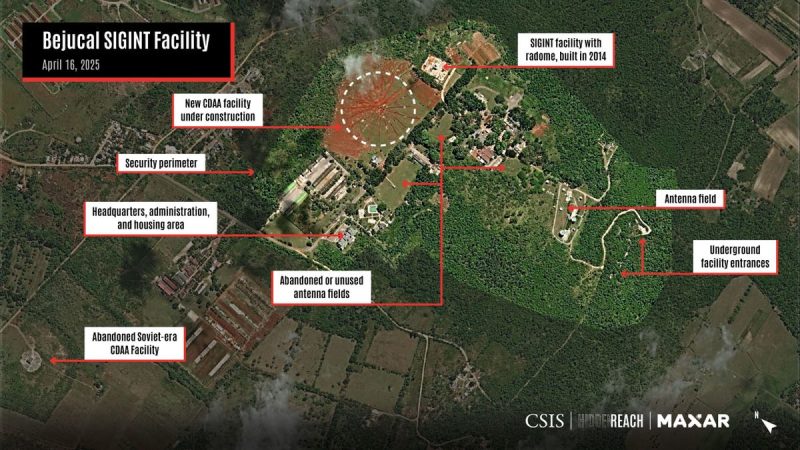China’s spying in Cuba sparks alarm on Capitol Hill after fresh satellite images show surveillance buildup
Republican leaders in the House are increasingly concerned about China’s presence in Cuba and its capacity to spy on the U.S. from the island.
A new report analyzing open-source intelligence found the addition of what appears to be a circularly disposed antenna array (CDAA) at the Bejucal signals intelligence site near Havana, Cuba. The antenna could pinpoint radio signals from between 3,000 and 8,000 miles away, putting key U.S. military installations and even Washington, D.C., well within range.
‘The CCP’s poisonous alliance with Cuba has posed significant threats to U.S. national security for decades,’ House Intel Chairman Rick Crawford, R-Ark., told Fox News Digital in an exclusive statement.
‘Their alleged involvement in signals intelligence hubs in Cuba is outward, unconcealed adversarial behavior against the U.S. The CCP’s actions are becoming increasingly more bold and thereby detrimental to Western Hemisphere security.’
The chairman called on the U.S. and its partners to work to thwart CCP influence in the Western Hemisphere.
The report’s authors at the Center for Strategic and International Studies (CSIS) said work on the CDAA is ongoing, but satellite imagery shows it is ‘already easily identifiable as a CDAA by its circular shape.’
A group of House leaders requested a briefing from Homeland Security Secretary Kristi Noem on the matter on Tuesday.
‘The PRC is positioning itself to systematically erode U.S. strategic advantages without ever firing a shot,’ read a letter penned by Homeland Security Chairman Mark Green, R-Tenn., China Committee Chair John Moolenaar, R-Mich., Transportation and Maritime Security subcommittee Chair Carlos Gimenez, R-Fla., and Rep. Sheri Biggs, R-S.C.
‘The geographic proximity of suspected PRC-linked facilities in Cuba to sensitive U.S. installations, including Naval Station Guantánamo Bay, Kennedy Space Center, Naval Submarine Base Kings Bay, and Cape Canaveral Space Force Station, may enable the PRC to monitor American detection and response capabilities, map electronic profiles of U.S. assets, and prepare the electromagnetic environment for potential future exploitation,’ the lawmakers wrote.
Cuba has a history of allowing U.S. adversaries to use its soil to snoop on U.S. communications. During the Cold War, the Soviet Union operated a surveillance facility at the Lourdes Signals Intelligence (SIGINT) Complex near Havana. That site monitored U.S. satellites and intercepted sensitive military and commercial telecommunications. After Russia, China moved in – pouring $8 billion into infrastructure projects on the island, including telecoms networks built by Huawei and Zhongxing Telecommunication Equipment Corporation, which are sanctioned by the U.S. due to surveillance concerns.
‘If left unchecked, the PRC’s activities in Cuba could establish a forward operating base for electronic warfare, enable intelligence collection, and influence operations that directly undermine U.S. national security interests,’ the lawmakers added.
READ THE LETTER BELOW. APP USERS: CLICK HERE
Cuba offers Beijing a platform to ‘monitor U.S. military movements, disrupt critical communications in the event of a crisis, and shape political dynamics throughout the region to its advantage.’
China has denied having any ties to surveillance infrastructure in Cuba, and nothing in the unclassified space shows indisputable links to China. But U.S. officials have long warned about China’s access to spying facilities on the island.
An earlier report from CSIS identified four SIGINT sites as ‘highly likely’ to be supporting CCP surveillance operations on the U.S.
‘These sites have undergone observable upgrades in recent years, even as Cuba has faced increasingly dire economic prospects that have drawn it closer to China,’ that report’s authors said.







